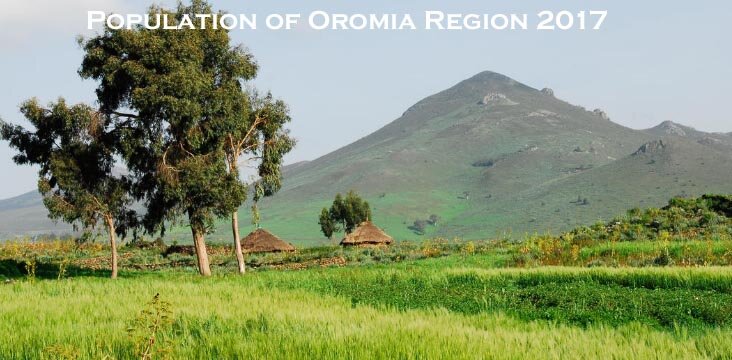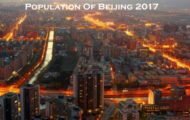Oromia is one of the 9 states of Ethiopia. It is flanked by the Somali Region toward the east and Kenya toward the south. The 2007 enumeration reported Oromia’s population at more than 27 million, making it the biggest state in populace and territory.

The Region was the scene of extensive challenges and an administration crackdown which killed many nonconformists in August 2016. The locale of Oromia was possessed by ethnic groups for a considerable length of time. The first people to live in Northern Oromia are accepted to be Muslim Gurage individuals from Abyssinia. It is one of the places in the country which produces coffee in a large scale. The people are usually very friendly and are very much associated with dance. If you are somehow planning to visit Ethiopia, make sure that you give it a shot at Oromia Region as well.
POPULATION OF OROMIA REGION IN 2017:
Talking about population, in order to check out the population of Oromia Region in 2017, we need to have a look at the population of the past 5 years. They are as per the following:
- 2012 – 29 Million
- 2013 – 30.7 Million
- 2014 – 32 Million
- 2015 – 33.4 Million
- 2016 – 35 Million
Getting from the past data of Oromia Region from the year 2012-16, it has been noticed that there has been an increase of 6 Million in the past 5 years. Therefore, it has been seen that every year the population increases by 1.2 Million. Hence, the population of Oromia Region in 2017 is forecasted to be 35 Million + 1.2 Million = 36.2 Million. So, the population of Oromia Region in the year 2017 as per estimated data = 36.2 Million.
OROMIA REGION Population 2017 – 36.2 Million(Estimated)
DEMOGRAPHY OF OROMIA REGION:
In light of the 2007 registration led by the Central Statistical Agency of Ethiopia, Oromia has an aggregate population of 27,158,471, comprising of 13,676,159 men and 13,482,312 ladies; urban inhabitants consist of about 11.3% of the population.
As per information reports of the year 2004, 32% of the populace had admittance to safe drinking water, of whom 23.7% were country citizens. Values for other reported pointers of the way of life for Oromia as per the year 2005 incorporate the accompanying: 19.9% of the people fall into the most reduced wealth quintile; literacy for men is 61.5% and for ladies it is 29.5%; and the baby death rate is 76 newborn child passing for every 1,000 live births.
POPULATION DENSITY AND GROWTH OF OROMIA REGION:
The Oromia Region has a population density of of 76.93 persons per square kilometer. The population over the years has been on the moderate side with rather slow growth rate in population. Many of the inhabitants leave the region for a better standard of living and which results in a slower rate of growth in terms of population. As per estimates, it is expected that the region will continue to grow at a similar pace.
FACTS ABOUT OROMIA REGION:
- It is the area of Coffee, Gold, and household stuffs like dairy cattle, sheep, horse, ca donkey and so forth. It is the mocomfortable locale in the country in light of the fact that the vast majority of Oromia land are green and there is a great deal of waterways.
- It Shares fringe with all the Region state in Ethiopia aside from Tigray. It likewise imparts International fringe to the Republic of the Sudan in the west and Kenya Republic in the south.
- Oromos call their country Oromia. They have been living in the Horn of Africa for the greater part of their known history. They are one of the biggest ethnic gatherings in Africa, with a population assessed at 28 million in the mid-1990s.
- Oromia is viewed as the wealthiest area of the Horn of Africa on account of its rural and regular assets. It is considered the breadbasket of the Horn. Cultivate items, including grain, wheat, oil seeds, oranges, and steers are brought up in wealth in Oromia.
- Oromia is likewise rich in gold, silver, marble, common gas, and also other other mineral assets. It has a few extensive and little streams utilized for horticulture and for creating hydroelectric power.
Find Latest Oromia region Population in 2018



